An Ice Age after the Flood ??
As proposed by some creation scientists !
Reference: ICR Impact #361 "Are Polar Ice Sheets Only 4500 Years Old?", June 2003
(http://www.icr.org/newsletters/impact/impactjuly03.html)
bring forth abundantly in the earth,and multiply therein.
(Genesis 9:7)
So while the LORD is instructing Noah and his offspring to be fruitful, the scientists at the Institute for Creation Research are saying that He make their life very difficult after the flood by putting them through an Ice Age!
While the LORD in Genesis 8:21-22 says:
"I will not again curse the ground any more for man's sake: ...
While the earth remaineth, seedtime and harvest,
... shall not cease"
"And Noah began to be an husbandman, and he planted a vineyard:"
Genesis 9:20
Apparently while still living amongst the "mountains of Ararat"
since
the migration of his offspring to
"a plain in the land of Shinar" does not come
until Genesis 11:2.
The following figure shows the climatic condition of Eurasia during the ice age maximum, with the brown area being cold and desert or simi-desert, including the mountainous areas between the Black and Caspian Seas, with glaciers in the higher altitudes (black areas). The green and yellow show areas favorable for human habitation in wet and dry periods, respectively. (Red shows the extended land area due to low sea levels)
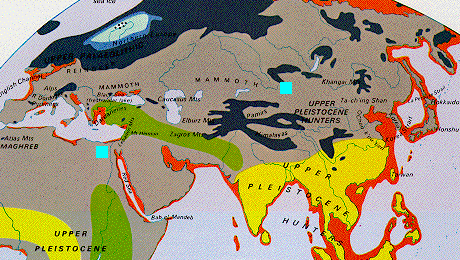
( from http://www.innerx.net/personal/tsmith/iceciv.html)
And the same theme is found from the additional sources at the end of this discussion,
indicating that possibly there are no forests to be found anywhere in the Middle East
region during a glacial maximum. Only desert and semi-desert and possible
in some select areas, near bodies of water, scrub/grassland and a few isolated trees
(5% to 20% tree cover in areas south of the Black Sea). In addition to these areas
being drier according to the paleoclimatologists, they also report that on the average
many areas are up to 15 degrees C colder during the glacial period.
From examining the Biblical record and the paleoclimate records it
appears unlikely that there was an Ice Age after the flood, this appears to be very inconsistent
with the words of the LORD just after the flood in Genesis 8:22!
![[IMAGE]](fig1_sml.gif)
|
Of course one could say that Noah was very creative at farming and irrigation or he found a nice isolated warm "oasis" to plant his vineyard, that major agriculture in the Middle East will have to wait until the ice age is over. But, in order for all the survivors of the flood to multiply greatly they are going to need an abundant supply of food as they spread over the territory and the question is, could they find it living under the ice age environment? There is no indication in the Scriptures that the LORD aided them in any way with any miraculous supplies of food, or a "garden". What did they all do for the 1000 years of the ice age as proposed, or how ever long one proposes that it lasted? Guessing from Figure 1 of the reference, we have very roughly 6200 years at an average rate of 0.225 meters/year = the top 1400 meters and 800 years at an average of about 2.0 meters/year = the lower 1600 meters, for about 7,000 years ago for the flood. (2)
Or guess one could adopt the very popular "out-of-Africa" theory, they all went directly to the most habitable area of Africa, there they multiplied for say 1000 years and then migrated back to the Middle East after the ice age was over? There is nothing in Scripture to support this theory!
![[IMAGE]](pang.gif)
|
Or, are they depending upon Genesis 10:25, "for in his days was the earth divided" to move the earth crust around so it all works out OK? So that after the flood the land mass that Noah and offspring were on was located so as to have a climate similar to that of Africa at the scientists LGM. However, this would seem to ignore that the paleoclimatologists are basing their climate maps on evidences that they obtain from the land masses as they are now geographically located, since melting glaciers deposited huge amounts of rocks and dirt far from their origins. Geologists use aerial photography and satellite imagery to map the movements of ancient glaciers. Glaciers leave behind telltale features such as cirques, which are depressions at the heads of U-shaped valleys, and vast plains littered with glacial debris. Also radar is used to look below surface soil for evidence of glacial activity that more recent events might have covered.
![[IMAGE]](polar.gif)
|
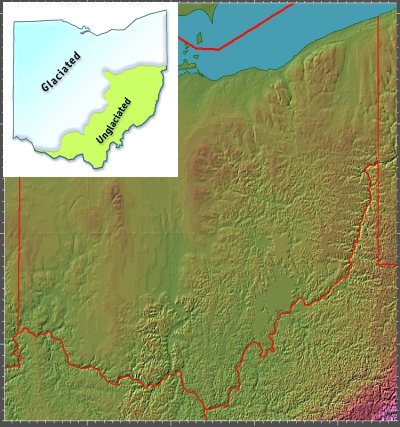
( from http://www.wooster.edu/geology/geo300/sbcb.html)
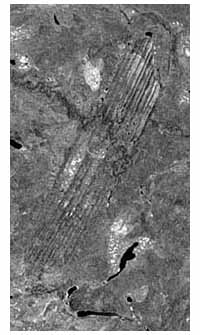
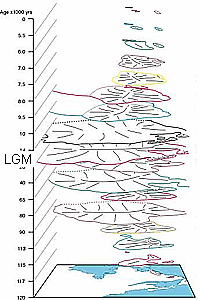
( from http://www.shef.ac.uk/geography/staff/clark_chris.html)
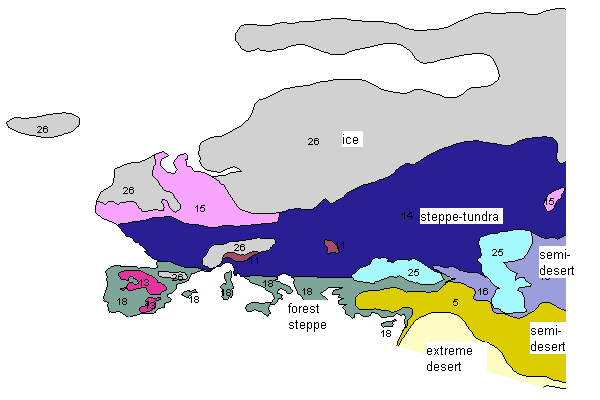
( from http://lgb.unige.ch/lgmvegetation/)
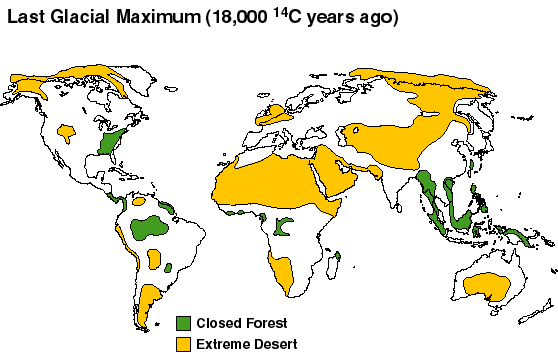
( from http://www.esd.ornl.gov/projects/qen/nerc.html)
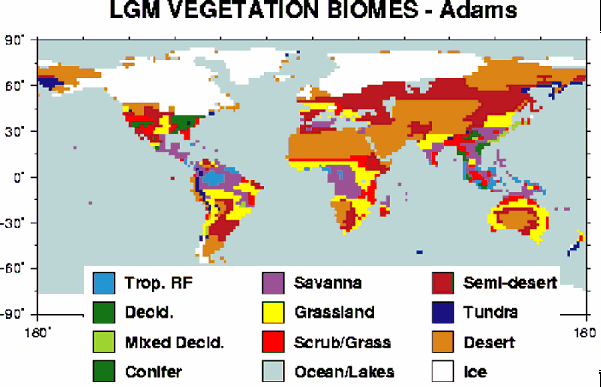
CONCLUSION: There is no Scriptual basis to support the proposed theories of an Ice Age after the Flood and the physical evidences we have presented also refute these theories !
Notes:
(1)Grapes in the "Ararat" area of today: in "The Secret Garden", By Peter Martin,
The Sunday Times, 11 October 1998
he reported that at Tabriz, Iran "At the roadside, we bought grapes
approaching the size of ping-pong balls."
"Botanists believe that the Caspian Sea region was the original home of the European grape."
(Microsoft® Encarta® Encyclopedia 2000. © 1993-1999 Microsoft Corporation. All rights reserved.)
However, even today the area is not exactly California vineyard country, the climate
is described as harsh and continental with winters to below -20 degree C and
summers to 40 degree C, mountains receiving about 40 inches of rain per year and
lower areas only about 12 inches of rain per year.
(2)Was curious about the quote from the reference: "The creation model is based on
a constant accumulation throughout the glacial period of around six meters of water
equivalent per year,". (27 times the average recent history Greenland rate!) Six meters is 19.686 feet, or about 236 inches and
"25-30 cm (10-12 in) of snow melts to 2.5 cm (1 in) of water"
(from Microsoft® Encarta® Encyclopedia 2000), so we have from 2360 to
2832 inches of snowfall. A quick search of the internet revealed that "Mount Baker, Washington --
World record snowfall, 1999. 1,140 inches (2,896 cm) of snow fell between
November 1998 and the end of June 1999, a world record for most snowfall
in a single winter season." Therefore, the model is based on more than double the
known modern day world record! And that has to be the average for approaching
1000 years! As the following map shows, today Greenland is considered as being under
desert conditions, what will change so drastically to move Greenland from a desert
to one of the wettest spots in the world? Or, are they proposing that the rainfall
over all the world will be increased by 27 times for around 1000 years? Naturally there is room
for much skepticism concerning this proposal!
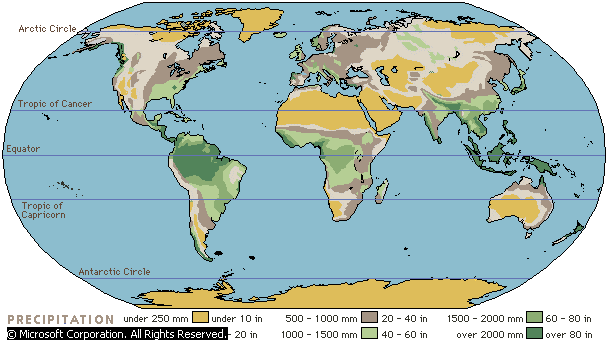
REFUTE the Vapor Canopy Theory?






